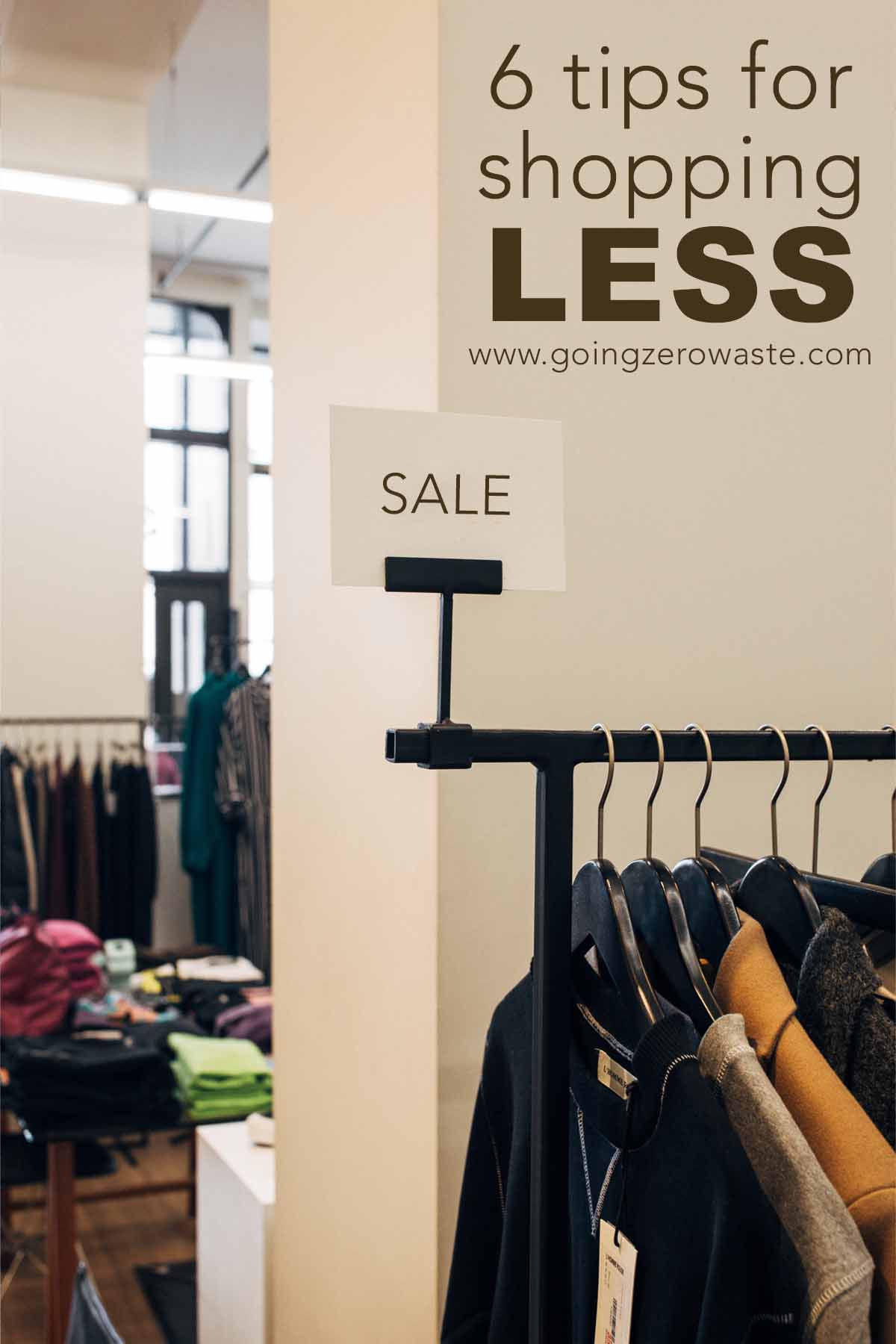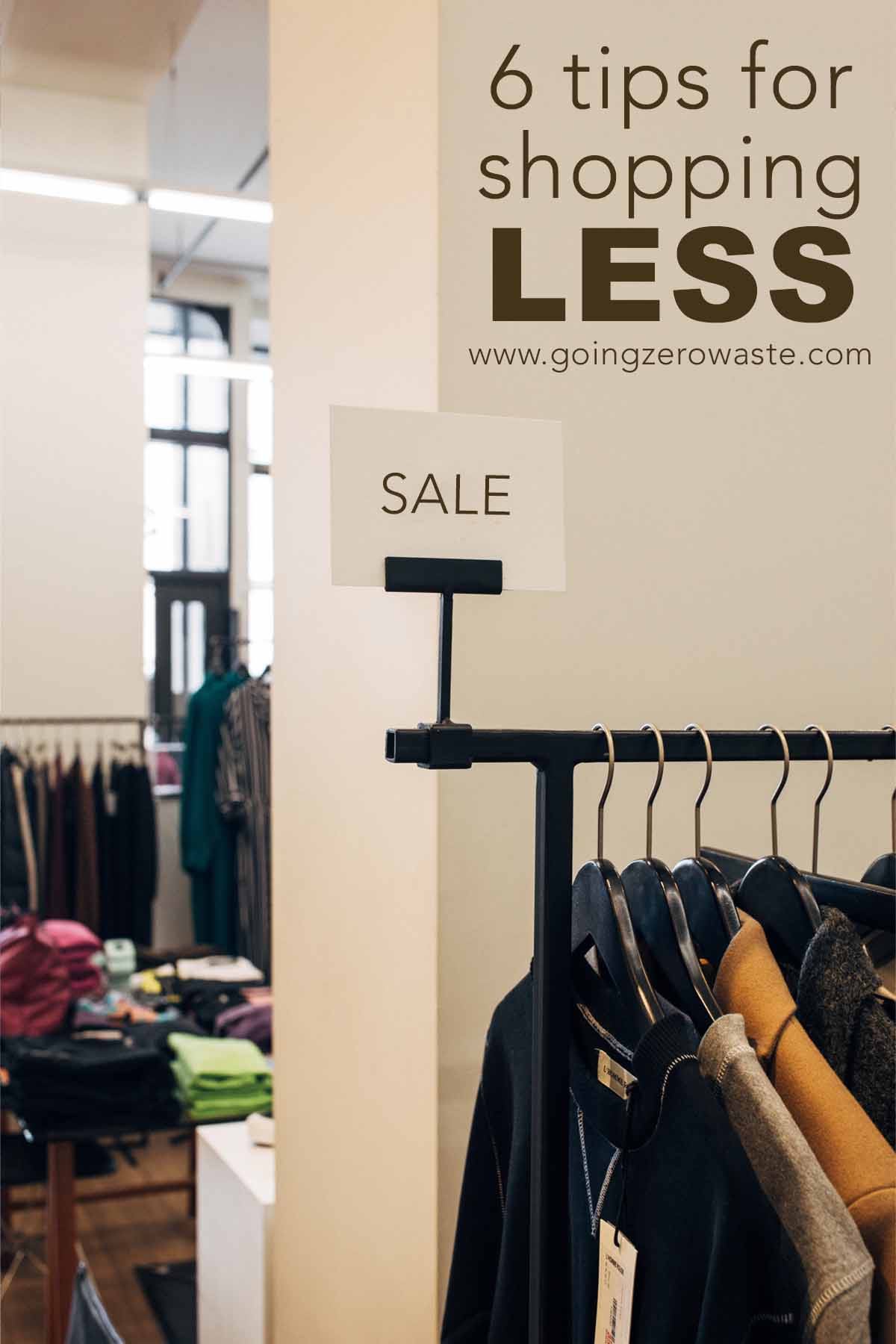[ad_1]
Last Updated on October 18, 2024
As a former shopaholic, I am excited to talk about bad shopping habits to quit! Learning how to buy less has changed my life for the better, helping me live more intentionally and sustainably.
Breaking your shopping habits can be challenging at first, but I promise it is so worth it! While it’s not always easy to shop less, these 6 tips never fail to bring me back on track. Below, you’ll find all of my tips, plus some other bad shopping habits to quit — especially if you want to live a zero waste lifestyle.

used to buy a lot… and I mean a LOT of stuff. Especially clothes. You can read about this in-depth in this post about how to make a small wardrobe work for you.
When I was finally able to recognize that I did have a shopping problem, I immediately decided that the only way to fix it was to make an extreme change: take all of my many, many (many…) clothes and turn my closet into an 18-piece wardrobe.
Spoiler alert: I totally failed.
Surprise, going from shopaholic to an 18-piece wardrobe wasn’t the smartest idea! However, this process really did help me rethink how and why I shop.
I’ll admit that getting honest about my bad shopping habit to quit was difficult — I think a part of me will always love shopping! But, taking a better look at how I go about it has made me appreciate it so much more. Shopping can be meaningful if you shift your mindset.
Although I buy less than I used to, I now have a greater appreciation for the things I already have and am able to find so much more enjoyment in the new things that I do buy from time to time.
One of the best things I did to curb my shopping habit was implementing a personal 30-Day Buy-Ban on all new items coming in.
That, in combination with the tips below, has been my ticket to shopping less — which is honestly one of the best things you can do for the environment.
how to buy less and help the environment
Shopping less really is one of the best ways for you to reduce your impact on the environment. We tend to buy a lot of stuff that we don’t really want or need. You can read about that here in my Beginners Guide to Zero Waste Living.
1. take inventory of what you already own
I don’t know about you, but when I’m out shopping and I see something I like, I can’t bear to part with it. For me personally, I LOVE sweaters. There are so many cute ones, but since I already have so many, I try to remind myself that I don’t need any more.
Keeping a running inventory of what you already own will make you way less likely to purchase something you already have at home.
2. stick to a buy ban
Creating a personal buy ban for myself has helped me not only reduce how much I shop but also buy with more intention when I do want something.
I now wait 30 days before I buy anything. This allows me to take inventory, think about how much space I have, and consider if what I want to buy is a want or a need. Ask yourself: will this item truly add value to my life?
3. unsubscribe
When it comes to identifying bad shopping habits to quit, we have to acknowledge the power of subscriptions.
One of the best things I did for myself was unsubscribe from catalogs, magazines, newsletters, emails — basically anything that would tempt me to shop for more stuff.
Being constantly inundated with information about products and sales makes it challenging to shop less. By unsubscribing, you can put shopping out of sight and out of mind. This tip was a game-changer for me in learning how to stop shopping!
4. socialize differently
It’s common for a lot of socialization activities to revolve around either eating or shopping. While these activities are certainly fun, they’re quite dangerous for your wallet if you’re making an effort to learn how to stop shopping.
Try going on a nice long nature walk with a friend instead! You’ll still get to talk and have a great time, but you won’t need to spend at all. Another alternative I love is going to an exercise class with someone.
If you do choose to go shopping as a social activity, going in with a list of the specific things you need can help you avoid making unnecessary purchases.
5. borrow and swap
A great alternative to shopping for clothes is borrowing and swapping with your friends! This is a fun way to try on clothes and find styles you love without even having to spend any money.
Plus, whatever’s leftover can be donated to the thrift store. Donating secondhand clothes has many benefits, including reducing environmental impact and allowing others to repurpose and love the items that you no longer want or need.
6. ignore sales
Using sales to justify purchases is one of the most important bad shopping habits to quit. Sales are tricky because we’re often more likely to buy something when we feel that we’re getting a great deal on it.
My best tip to not give in to sales is to ask yourself this question: would I buy this item if it was being sold at full price? If you wouldn’t justify this purchase at full price, you probably don’t need it at the sale price either.
what are smart buying habits?
Some of the best buying habits for anyone who wants to learn how to stop shopping are creating a budget (and sticking to it!), making a list of items so that you only buy what you need, and distinguishing between wants and needs.
what is the difference between a want and a need?
A want is something that you would enjoy, but that you could live without if push came to shove. A need is something that will add genuine value to your life — something that is practical or that will be used often. Understanding the difference between wants and needs can help you buy less and prioritize the most important things in your life.
what are signs of a shopping addiction?
Common signs of shopping addiction include regularly purchasing items that have no use, always thinking about the next thing that you want to purchase, and experiencing an extreme rush of happiness (or “high”) after buying something, followed by a wave of guilt.
[ad_2]
Source link
